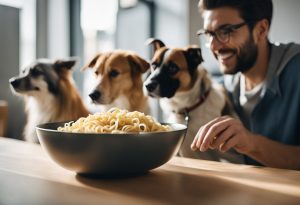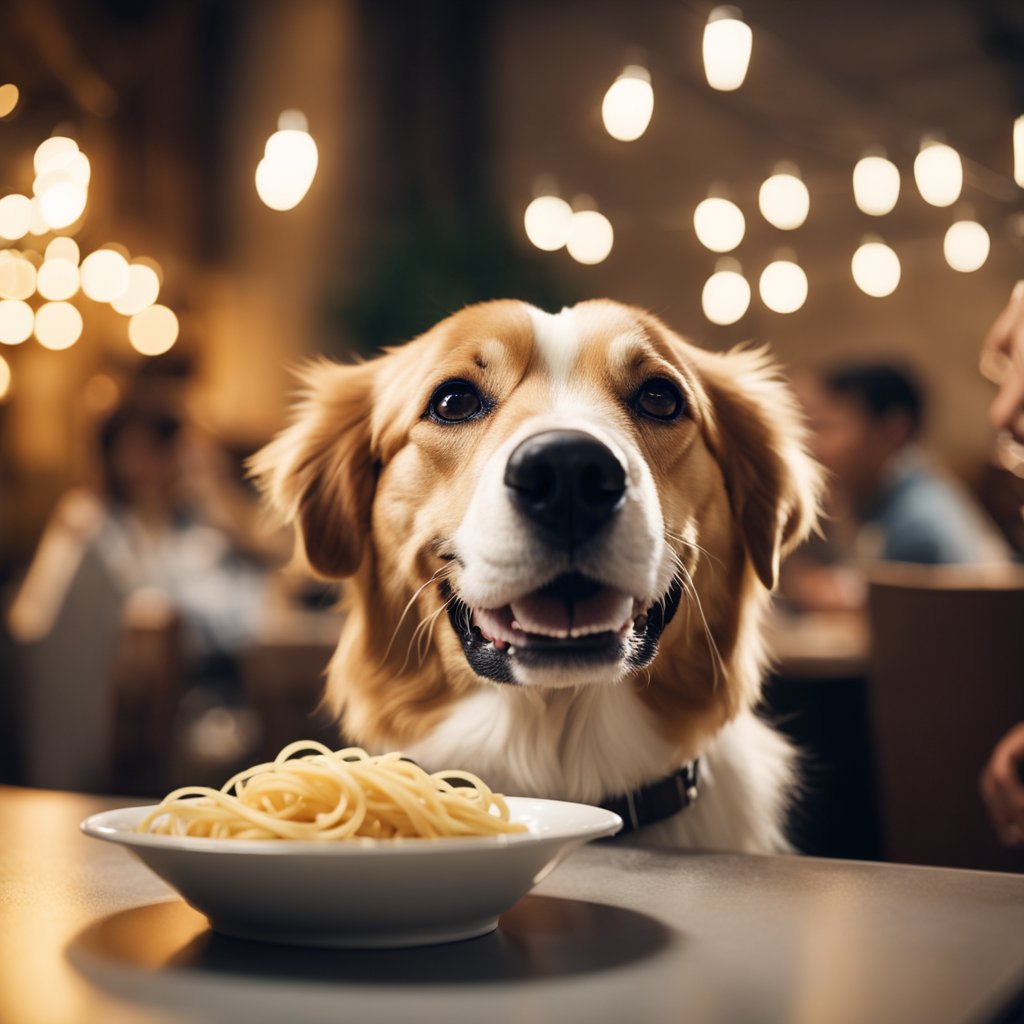Can Dogs Eat Pasta? Understanding the Safety and Nutritional Value
Many pet owners wonder if they can share their favorite foods with their furry friends. Dogs can eat plain pasta in moderation, but there are important considerations to keep in mind. While it is not toxic, some types of pasta and added ingredients may not be safe for dogs.

Feeding your dog pasta can be a special treat, but you must be cautious about sauces and seasonings. Ingredients like garlic, onions, and excessive salt can harm your pet. Learning how to serve pasta safely can help you avoid potential problems.
Key Takeaways
- Plain cooked pasta is safe for dogs in small amounts.
- Avoid sauces that contain harmful ingredients like garlic and onions.
- Always consult your vet before introducing new foods to your dog’s diet.
Can Dogs Eat Pasta?

Pasta can be a question mark for many dog owners. It’s important to understand what makes pasta safe or unsafe for your dog and how it fits into their diet.
Nutritional Considerations
Pasta is primarily made from wheat, which contains carbohydrates. Carbohydrates can give your dog a source of energy. However, pasta lacks essential nutrients that your dog needs, such as proteins and specific vitamins.
When you offer pasta, it should be plain and cooked. Avoid adding salt, butter, or oil. These extras can lead to unhealthy weight gain. You may occasionally give your dog small portions as a treat. Always keep it in moderation.
If your dog has any dietary restrictions, always check with your vet first. Though pasta can provide some benefits, it should complement a balanced diet, not replace it.
Potential Hazards
While pasta itself can be safe, some associated risks exist. Avoid giving your dog pasta sauce. Many sauces contain ingredients like garlic and onions, which are toxic to dogs. Even small amounts can cause serious health issues.
Next, be cautious if your dog has allergies or sensitivities. Wheat is a common allergen, and some dogs can react negatively. Look for signs like itching or stomach upset.
Lastly, serving too much pasta can lead to obesity. Monitor portions carefully to keep your dog healthy. Consulting your vet can help ensure that any pasta you give your dog is safe and appropriate.
Serving Pasta to Dogs

When serving pasta to dogs, it’s essential to consider portions, types, preparation methods, and how often you feed it to your pet. Making informed choices helps ensure a safe and enjoyable experience for your dog.
Appropriate Portions
The right portion size is vital when feeding your dog pasta. Generally, pasta should only make up a small part of their overall diet. A good rule of thumb is to limit pasta to about 10% of their daily food intake.
For small dogs, this might be about a tablespoon of cooked pasta. Larger dogs can handle about one to two tablespoons. Always monitor your dog for any adverse reactions after trying pasta. Gradually introduce it to avoid digestive issues.
Types of Pasta
Not all pasta types are suitable for dogs. Plain, cooked pasta made from wheat is often safe in moderate amounts. However, watch out for certain ingredients.
Avoid pasta with garlic, onions, or heavy sauces. These can be harmful to dogs. Instead, consider gluten-free options that use rice or quinoa. They might be better for dogs with sensitivities. Always check labels for additives that may not be dog-friendly.
Preparation Methods
How you prepare the pasta is also essential. Always serve pasta plain and fully cooked. This ensures it is soft and safe for your dog to digest.
Never use oils, salt, or flavorings in the cooking process. Some of these ingredients can upset your dog’s stomach. Chop the pasta into smaller pieces, making it easier for them to chew and swallow.
Frequency of Feeding
Pasta shouldn’t be a daily menu item for your dog. Instead, treat it as an occasional snack or a special reward. Limit serving pasta to once or twice a week to avoid any possible weight gain or digestive issues.
Monitor how your dog reacts after eating pasta. Each dog is different, so adjust the frequency based on what works best for your pet. This approach helps keep their diet balanced while allowing them to enjoy occasional pasta treats.
Resources

When learning about whether dogs can eat pasta, it’s helpful to explore various reliable resources. Here are some useful links to guide you:
- The Spruce Pets: This site explains which types of pasta are safe for dogs. It discusses the basic ingredients and cautions against toxic additives. Check it out here.
- Hepper: Provides a vet-approved nutrition guide. It offers practical advice on feeding human food to dogs. You can read more here.
- Wag!: This resource details the safety of pasta for dogs. It highlights potential allergies and necessary precautions. Access it here.
- PangoVet: This site explains the possible effects of feeding pasta to your dog and advises on plain versus seasoned pasta. Find the information here.
- Petful: Offers guidance on cooking pasta for dogs and emphasizes the importance of keeping it plain. Learn more here.
These resources can provide valuable insights and help you make informed decisions about your dog’s diet.
Frequently Asked Questions

Many pet owners wonder about the safety and health effects of feeding pasta to dogs. It is important to know the specifics about cooked pasta, sauces, and how they can impact your dog’s digestion and overall well-being.
Is cooked pasta safe for dogs to consume?
Yes, cooked pasta is safe for dogs to eat in moderation. It should be plain and thoroughly cooked to ensure it is easy for your dog to chew and digest. Avoid serving raw pasta, as it can be hard for them to handle.
Are pasta sauces potentially harmful to dogs?
Many pasta sauces can be harmful to dogs. Common ingredients like onions and garlic are toxic to them. Heavy creams and spices can also upset their stomach. Always keep pasta dishes simple and unseasoned.
Can feeding dogs pasta as an alternative to rice affect their health?
Using pasta as an occasional substitute for rice can be fine, but moderation is key. Pasta is high in carbohydrates, so if it becomes a regular part of your dog’s diet, it may lead to weight gain or nutritional imbalances.
How does cheese in pasta affect a dog’s digestion?
Cheese can be difficult for some dogs to digest, especially if they are lactose intolerant. If you mix cheese with pasta, monitor your dog for any signs of digestive upset, such as gas, diarrhea, or stomach pain.
Should dogs with upset stomachs be given pasta?
Feeding pasta to a dog with an upset stomach may not be the best choice. Although plain, cooked pasta is gentle on the stomach, it is often easier to manage their recovery with a bland diet such as rice and boiled chicken.
What are the impacts of feeding pasta to a dog daily?
Daily feeding of pasta can contribute to weight gain and obesity in dogs due to its high carbohydrate content. It may also lead to nutritional imbalances if other essential nutrients are not included in their diet. Moderation is crucial for maintaining your dog’s health.

